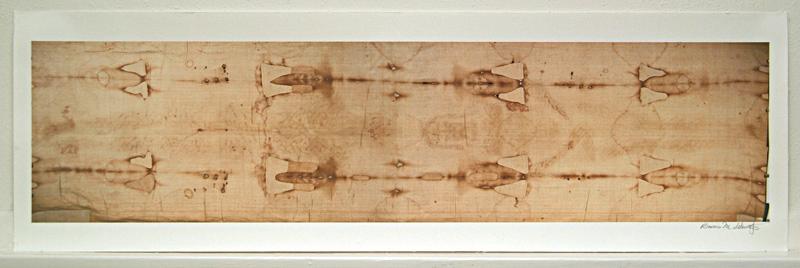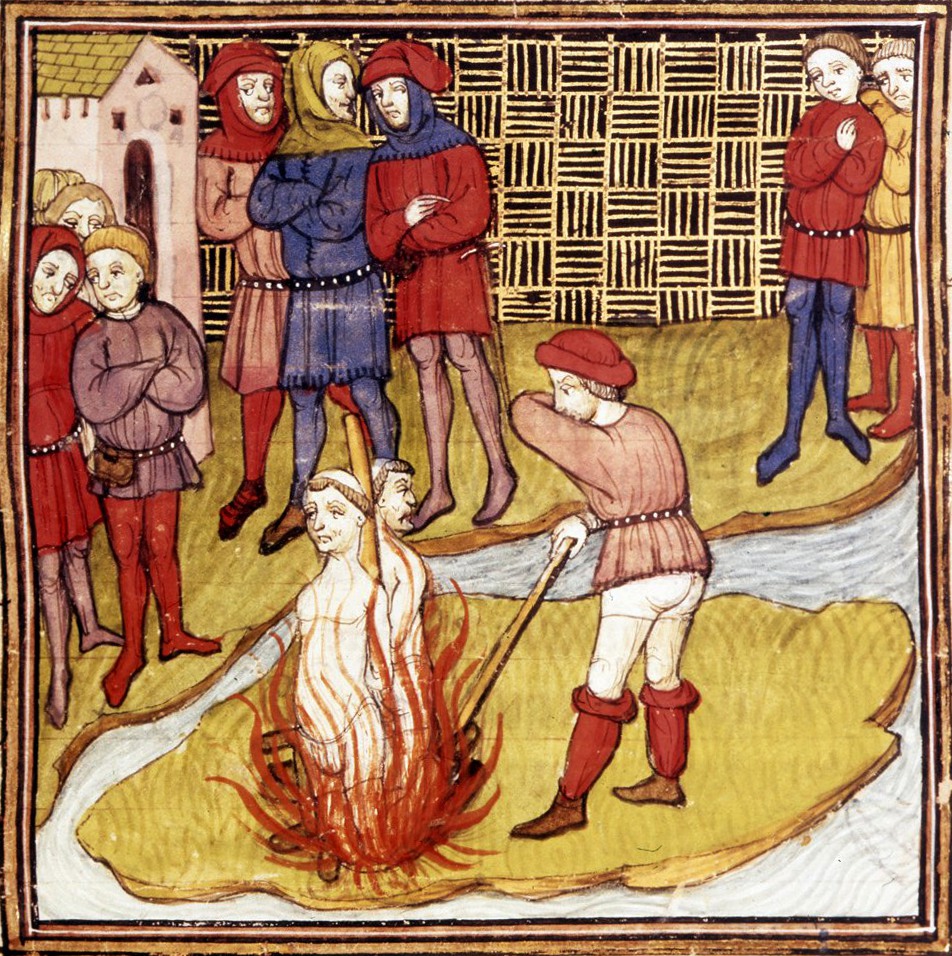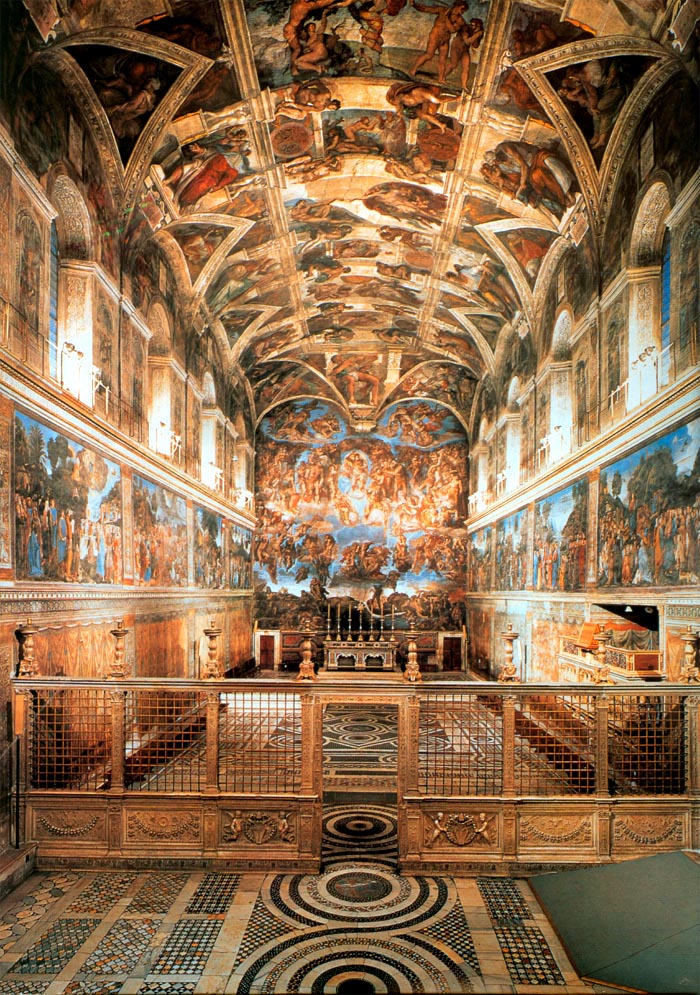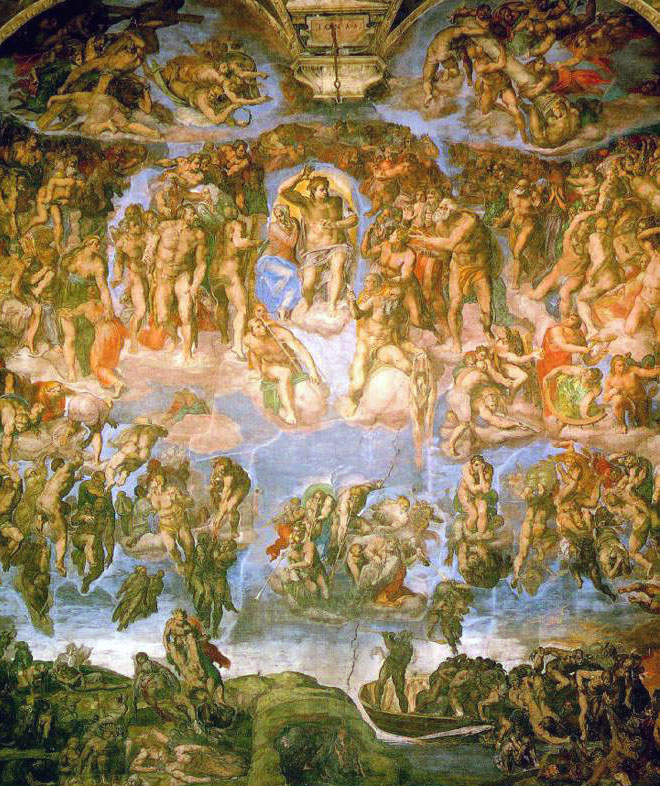Now that I have at last sent my paper, "A proposal to radiocarbon-date the pollen of the Shroud of Turin" to the

[Above (click to enlarge): "Miniature Shroud Replica" on Cotton (Image Approx. 40" x 10"), Shroud.com]
British Society for the Turin Shroud (BSTS) for publication in its December newsletter, here belatedly, is the next instalment of my book outline, "The Shroud of Turin: Burial Sheet of Jesus?," namely the outline of section, 1.1 Introduction. What is the Shroud of Turin? From now on I will abbreviate the subject line, "The Shroud of Turin: Burial Sheet of Jesus?" to "TSoT" so as to better fit the Blog Archive panel on the right.
I hope to post a new subsection page every few days, which will be linked to the section page above it. To avoid getting bogged down in documenting each point, I will in the first instance write each subsection `off the top of my head' with no, or minimal, documentation, and I will then later in the background `flesh out' each page, complete with documentation. These online pages will then be the basis of a future book.
I am going to do the same over on my other blog, CreationEvolutionDesign, where I will write in parallel the outline of another future book, "Problems of Evolution."
I am setting no time-frame on the completion of these two books, except to say that I expect they will take several years. Basically I am channelling my blogging into a format where I will over time comprehensively cover most of the major points in each major subject (the evidence for and against the Shroud of Turin being the very burial sheet of Jesus, and the major problems of the theory of evolution) and at the end of each I will have something tangible to show for my blogging!
CONTENTS
1. INTRODUCTION
1.1. What is The Shroud of Turin?
The Shroud of Turin is a linen cloth, held by St. John the Baptist Cathedral, in the Italian city of Turin, which bears the image of a man with wounds matching those of Jesus Christ as described in the Gospels.
1.1.1. Names of The Shroud of Turin
1.1.2. A linen cloth
1.1.3. Held in St. John the Baptist Cathedral, Turin
1.1.4. Bears the image of a man with wounds matching those of Jesus as described in the Gospels
BIBLIOGRAPHY
Stephen E. Jones, BSc. (Biology).
My other blog: CreationEvolutionDesign
What Is the Turin Shroud? In the summer of 1978 three million tourists visited Torino (Turin), Italy. They had come from all over the world to wait in line and to look upon a linen cloth which had been in Turin for more than four hundred years. They knew that the cloth had not been shown to the general public for almost fifty years and that this would likely be its only display in their lifetime. As they entered the cathedral of St. John the Baptist they could see a large, narrow cloth measuring 14.3 feet long by 3.5 feet wide. It was flood-lit and was mounted in front of the main altar at the far end of the church. Gradually, as they neared the altar, they began to notice on the cloth an extremely faint, reddish-colored, life-sized image of a bearded man. The man looked strikingly like traditional images of Jesus Christ. Indeed, the cloth known as the Shroud of Turin is thought by many people to be the actual burial wrapping of Jesus. Both the front and the back of the body can be seen on the cloth. From either end the figure appears feet-head, head-feet. This tells us that he may have been placed on one half of the cloth. The other half would then have been pulled over the front of the body. There are stains on the body that resemble blood stains from an ancient Roman scourging and crucifixion with nails. On the front, there are trickles of blood on the man's forehead, a large stain on his right side, and stains from a wound in one wrist. (The other hand cannot be seen.) Both arms show blood runoffs from the hands to the elbows. On the back can be counted about 120 small stains which conform to the shape of a Roman whip. More blood trickles are seen on the back of the head. The feet are bloodied from apparent nail wounds. In short, the wounds on the image of the Shroud conform to the story of Jesus' crucifixion as told in the Gospels." (Scavone, D.C., "The Shroud of Turin: Opposing Viewpoints," Greenhaven Press: San Diego CA, 1989, pp.6,8. Emphasis original).
"What is the Shroud of Turin? ... The Shroud, often called the `Holy Shroud,' is most commonly referred to as the Shroud of Turin because it has been physically located in the Cathedral of St. John the Baptist in Turin, Italy for over 400 years. This precious cloth is considered by millions of Christians throughout the world to be the actual burial cloth of Jesus Christ - a direct witness to His passion, death and resurrection 2,000 years ago. The Shroud is the holiest relic in Christianity. Physically, the Shroud is a remarkably well-preserved oblong piece of linen cloth 14'3" long (4.36 meters) and 3'7" wide (1.1 meters), weighing approximately 5 1/2 lbs. (2.45 kgs.) . The linen fibers are woven in a three-to-one herringbone twill with a Z-twist and consist of a fairly heavy yarn (34/100 of a millimeter thick) of Near Eastern or Mediterranean basin flax. [Tribbe, F.C., "Portrait of Jesus?," Stein & Day: New York, 1983, pp.30-31] Down the left side of the Shroud is a border approximately 3 1/2 inches wide (8 centimeters from the edge) running the full length of the linen cloth. Once thought to be a side-strip sewn onto the main cloth, it has now been determined to be a selvedge, that is, a piece of cloth woven into the main cloth so that it will not unravel. It is done in such a manner as to require no hem. The reason for adding the selvedge is not known for certain. However, historian and renowned English sindonologist Ian Wilson speculates that the selvedge may have been added at a later date perhaps to center the image on the cloth for viewing. He considers this the most logical explanation and points out that the selvedge was added at the same time as the fringe and gold covering, the overall purpose being to transform the cloth from a shroud to what seems to have been some sort of `portrait.'" (Iannone, J.C., "The Mystery of the Shroud of Turin: New Scientific Evidence," St Pauls: Staten Island NY, 1998, pp.1-2. Emphasis original).











